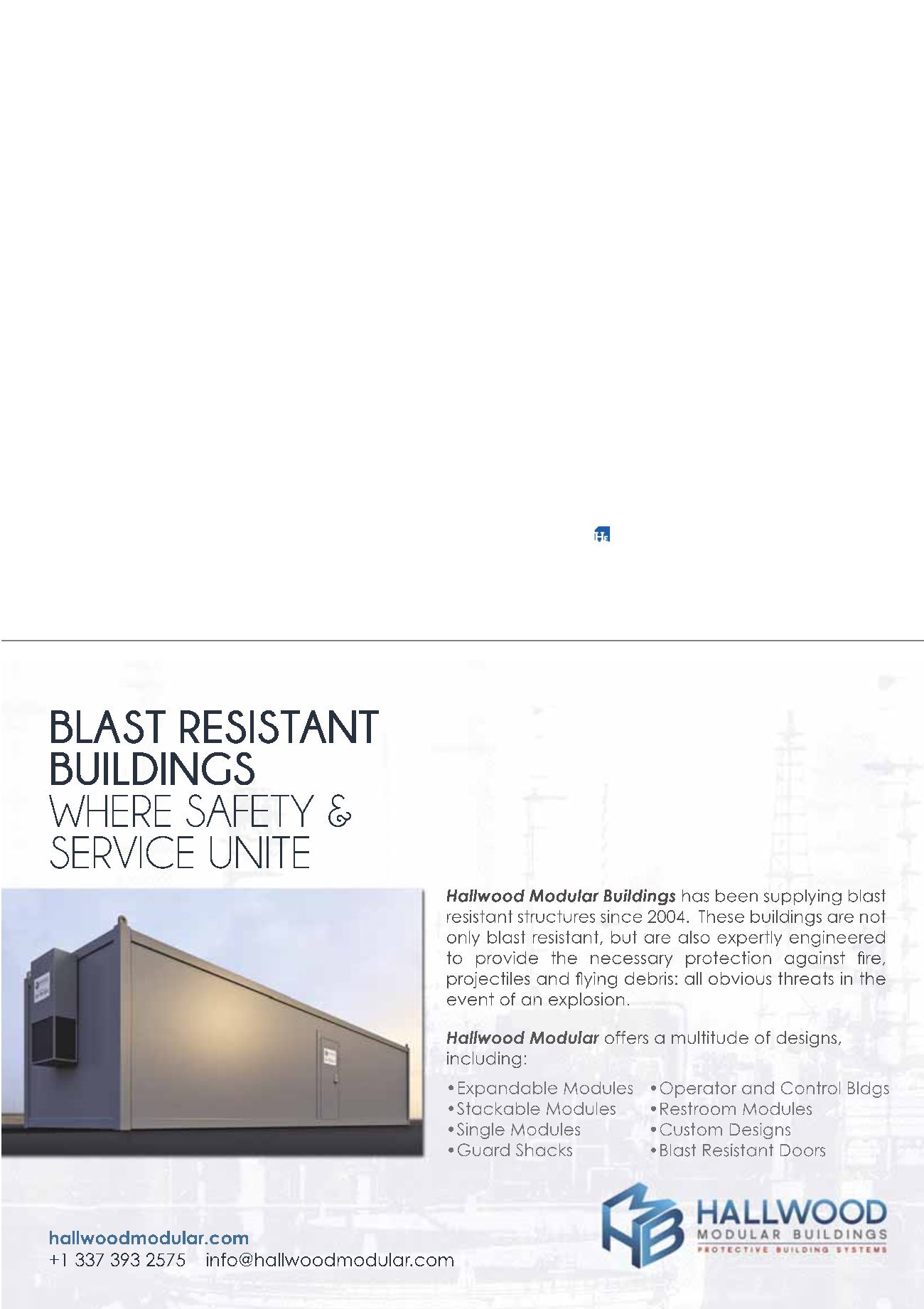
chemicals is involved. As written and interpreted by OSHA,
the Mechanical Integrity provisions apply to all equipment
that is “critical to process safety” (see 29 C.F.R. § 1910.119(j)).
The Rule lists six types of equipment that are always
considered critical, and, according to OSHA, the standards
apply equally to equipment that each employer deems
“critical to process safety.” The Rule’s Appendix suggests
that these requirements apply to “second line of defense”
systems, which “control or mitigate hazardous chemicals
once an unwanted release occurs.” This must include
employee-occupied structures, which can control or
mitigate the impact on workers of a release (see 29 C.F.R. §
1910.119, App. C). Once applied, these provisions ensure
employee safety by requiring documentation of the safe
materials, processes, and testing used to construct the
modules or buildings.
Due to this standard, some companies have
disallowed non-mechanical integrity compliant or
non-purpose built BRMs (i.e. converted shipping
containers) within blast zones. Although shipping
containers were built to stringent ISO standards, primarily
in China, the conversion process to BRMs is not as precise
as purpose built BRMs. For example, steel structural
members are welded inside the container and against the
exterior wall, but because of a lack of space, a seam weld
is unable to be adequately applied on all four sides. The
result is that an unprimed, un-welded seem is susceptible
to rust and corrosion, either through condensation or
water seepage in the belly pan. Corrosion that is not
accounted for in the engineering calculations can
compromise the integrity of the assigned blast rating.
Conclusion
Despite what may be a common misperception, BRMs are
not mutually interchangeable between different suppliers.
BRMs are not a commodity, but rather highly engineered
structures designed to be the last line of defense for those
who have to work within blast zones. For those who are
faced with the task of selecting a BRM, the applicable, acid
test question might be: what building you would want to
occupy if you were the one occupying it? When
considering two apparently identical BRMs with similar
blast ratings, it is important to consider module weight and
the space between the exterior and interior walls. It is also
important that a manufacturer has detailed construction
documentation, extensive product testing and ongoing
maintenance procedures that maintain the building to its
original specifications.
Considering that BRMs are the last line of defense for
those who work in the process areas, common sense safety
factors should be considered when making either a buying
or rental decision.
References
1.
https://blog.safetyculture.com/industry-trends/fatal-four-construction-safety-infographic.
2.
https://www.osha.gov/Publications/safety-health-addvalue.html.







